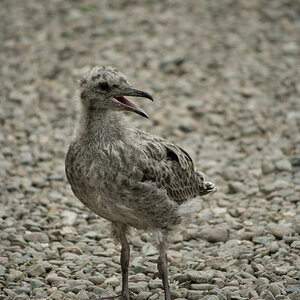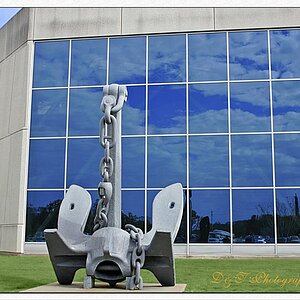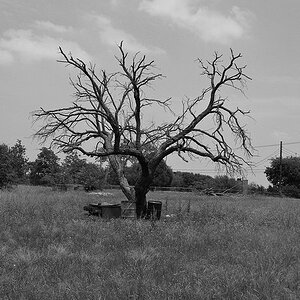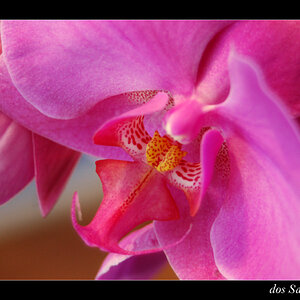Navigation
Install the app
How to install the app on iOS
Follow along with the video below to see how to install our site as a web app on your home screen.

Note: This feature currently requires accessing the site using the built-in Safari browser.
More options
You are using an out of date browser. It may not display this or other websites correctly.
You should upgrade or use an alternative browser.
You should upgrade or use an alternative browser.
Complete Novice Photographer (Some help?)
- Thread starter JoshKbosh
- Start date
Derrel
Mr. Rain Cloud
- Joined
- Jul 23, 2009
- Messages
- 48,225
- Reaction score
- 18,941
- Location
- USA
- Website
- www.pbase.com
- Can others edit my Photos
- Photos OK to edit
Forget any and all Nikon Ai or Ai-S series manual focusing lenses. FORGET them! They will give you no light metering, and no autofocus, and only manual flash power adjustment. I own a D70...it was designed for AF and AF-D lenses, as well as the newer AF-S and AF-S G-series lenses. You want to look at ONLY AF, AF-D, or AF-S lenses.
Because of the 1.5x FOV multiplier, it's very helpful to have a lens that has a short lower end on it, like even the 18-55 "kit zoom", or the more useful, older 18-70mm lens from Nikon. There were some older AF-D lenses made that are pretty affordable, like the little 28-80mm models, and others in that lower price range. KEH.com has a huge selection of used Nikon lenses.
Because of the 1.5x FOV multiplier, it's very helpful to have a lens that has a short lower end on it, like even the 18-55 "kit zoom", or the more useful, older 18-70mm lens from Nikon. There were some older AF-D lenses made that are pretty affordable, like the little 28-80mm models, and others in that lower price range. KEH.com has a huge selection of used Nikon lenses.
- Joined
- Oct 18, 2011
- Messages
- 6,070
- Reaction score
- 2,420
- Location
- Glasgow, Scotland
- Website
- www.petecrawford.co.uk
- Can others edit my Photos
- Photos OK to edit
If money is tight a second hand kit lens is probably the best buy. $50 is pushing it to get anything useable though. Possibly a second hand nifty fifty might do you a while too.
I'd reccomend saving up for a Sigma 17-70mm f2.8-4 OS HSM Contemporary. Its reasonably low cost (as far as decent lenses go) reasonably sharp and can cover a lot of the photography basics (wide angle to short telephoto, low light at the wide end, pretty sharp throught the focal range, optical stabilisation and very versitile). If you are shooting products you'll want a copy of Light, Science and Magic (a much reccommended book on lighting) plus a speedlight (try yonguno for decent budget options and check out the strobist blog: especially his lighting 101 tutorials) and a few modifiers though you can make decent enough DIY lighting modifiers.
I'd reccomend saving up for a Sigma 17-70mm f2.8-4 OS HSM Contemporary. Its reasonably low cost (as far as decent lenses go) reasonably sharp and can cover a lot of the photography basics (wide angle to short telephoto, low light at the wide end, pretty sharp throught the focal range, optical stabilisation and very versitile). If you are shooting products you'll want a copy of Light, Science and Magic (a much reccommended book on lighting) plus a speedlight (try yonguno for decent budget options and check out the strobist blog: especially his lighting 101 tutorials) and a few modifiers though you can make decent enough DIY lighting modifiers.
leed222
TPF Noob!
- Joined
- May 27, 2015
- Messages
- 3
- Reaction score
- 0
- Can others edit my Photos
- Photos NOT OK to edit
Hey there everyone... another new guy here to the "Digital" end of photography. I'm a 15 year news photojournalist, working in TV news. Shooting video has given me a leg up to this new hobby of mine... composition, white balance, color filters. But I had never realized how different the actual thinking aspect of shooting still pictures is compared to capturing "rolling" video. Anyway, I purchased the Nikon D3200 kit with the 18-55mm lense. After some research and toying around at the local camera store with fixed focal lenses, Im thinking of my next purchase being the 35 mm 1/8 lense...anybody have any input on fixed lenses or this particular lense? Great to be here in this forum...thanks
TCampbell
Been spending a lot of time on here!
- Joined
- Mar 31, 2012
- Messages
- 3,614
- Reaction score
- 1,556
- Location
- Dearborn, MI
- Can others edit my Photos
- Photos OK to edit
Since you happen to mention you are also interested in astronomy and your signature says you have a 90mm f/11 telescope (I'm guessing it's a refractor) it's fairly easy to connect the camera to the telescope so that the telescope becomes the lens.
Assuming you're telescope uses 1.25" diameter eyepieces (the most common) then you'd need one of these:
Amazon.com Celestron 93625 Universal 1.25-inch Camera T-Adapter Telescope Photo Adapters Camera Photo
That inserts just like an eyepiece and the back of it has industry standard "T-threads". Next you need to adapt the universal t-threads to the Nikon-specific camera mount. To do that, you would need a "T-adapter" (they make these for Nikon, Canon, Sony, etc. etc.). This "T-Adapter" has female t-threads on the front side, but has camera-specific mount on the back.
Amazon.com Celestron 93402 T-Ring for Nikon Camera Attachment Celestron Adapter Camera Photo
Screw the T-adapter onto the T-mount, then attach to your camera as if it were a lens. You can now insert the camera into the telescope's focuser (just like a telescope eyepiece) and the entire telescope is now a "lens" for the camera. (BTW, you should attach it straight-through to the telescope... don't use the 90º diagonal).
Depending on how much travel your focuser offers, you MIGHT need an extension. The 90º diagonal typically takes up about 2" worth of focal length and your telescope camera sensor may be too close if the focuser does allow enough travel. The 2" extension is cheap (it's just a hollow metal barrel.) Try using the camera without the extension (because the fewer components between the telescope and camera, the more "rigid" it will be -- so avoid unnecessary extra components whenever you can.) If you find that the image is not focused and, as you move the focus travel back you notice the image is only starting to come to focus before you run into the limit of focus travel... then add in a 2" extension to solve the problem. Here's a link to an extension:
Amazon.com Orion 5123 1.25-Inch Telescope Eyepiece Extension Tube Camera Lens Extension Tubes Camera Photo
An image of the moon is an easy shot at f/11. Just set the shutter speed to the inverse of the ISO setting (e.g. at ISO 200 you would use 1/200th. At ISO 400 you would use 1/400th, etc.) No tracking motors, etc. are needed for the moon because it's bright and you can use a very fast exposure. The moon usually looks best when imaged somewhere around 1st quarter since the sun is lighting it from the side (from our perspective) so we see nice deep shadows and that really helps the craters appear "3D". If the moon is "full" then the sun is "at our back" lighting the moon from straight-on -- we don't see any shadows so everything looks "flat" or "2D". 3rd quarter is also fair game, but we don't see the moon after sunset when it's 3rd quarter... you have to wake up a few hours before sunrise to get those images.
Planets are somewhat similar (some tracking helps, but it doesn't need to be precise). Planets are usually handled by shooting a minute's worth of video and then using stacking software (such as "Registax", etc. which happens to be free) to build the stacked image of the planet (there are numerous YouTube videos that show you how to do this.)
Deep-space objects (Galaxies, Nebulae, etc.) are much more difficult... they DO require many long-exposure images and that means you need a telescope that can track precisely and you usually also need an "auto-guider". This is where astro-imaging starts to get very expensive. My first low-cost mount couldn't handle it. I bought a more expensive (allegedly better) mount ... also not able to do the job. I finally gave up trying to be cheap and bought a $3k mount (by the time I was done with accessories it was closer to $4k) and that DOES do the job fabulously. Probably the "lowest" end mount for very basic astro-imaging would be something like a Celestron Advanced VX mount (about $700-800 I think, but I'm not checking prices) but that's low-end... a better mount would be around $1500+ if you want to get serious.
You'll need to look through the viewfinder to focus. Until the Nikon D810a (a camera specifically designed for astro-imaging) previous models don't have "exposure simulation" when using the live-view screen. That means the camera tries to increase the exposure vied in "live view" (due to all the blackness of space in your image) and that causes anything non-black to be totally blown out and everything is just a big white blob with no ability to tell if you are focused or not. Some image-acquisition apps such as "Backyard NIK" can get around this -- but that would involve taking a laptop out with you to the telescope so you can connect the software to the camera.
Anyway, the moon is a very easy astro-image and doesn't require any expensive equipment, tracking, advanced software, stacking, etc. to get lunar photos. You should definitely try it.
Planets are only slightly harder because they use video capture and then use "stacking" software.
Imaging deep space objects (galaxies, nebulae, etc.) is hard... and the equipment that does it well tends to be costly. Save that for later.
Assuming you're telescope uses 1.25" diameter eyepieces (the most common) then you'd need one of these:
Amazon.com Celestron 93625 Universal 1.25-inch Camera T-Adapter Telescope Photo Adapters Camera Photo
That inserts just like an eyepiece and the back of it has industry standard "T-threads". Next you need to adapt the universal t-threads to the Nikon-specific camera mount. To do that, you would need a "T-adapter" (they make these for Nikon, Canon, Sony, etc. etc.). This "T-Adapter" has female t-threads on the front side, but has camera-specific mount on the back.
Amazon.com Celestron 93402 T-Ring for Nikon Camera Attachment Celestron Adapter Camera Photo
Screw the T-adapter onto the T-mount, then attach to your camera as if it were a lens. You can now insert the camera into the telescope's focuser (just like a telescope eyepiece) and the entire telescope is now a "lens" for the camera. (BTW, you should attach it straight-through to the telescope... don't use the 90º diagonal).
Depending on how much travel your focuser offers, you MIGHT need an extension. The 90º diagonal typically takes up about 2" worth of focal length and your telescope camera sensor may be too close if the focuser does allow enough travel. The 2" extension is cheap (it's just a hollow metal barrel.) Try using the camera without the extension (because the fewer components between the telescope and camera, the more "rigid" it will be -- so avoid unnecessary extra components whenever you can.) If you find that the image is not focused and, as you move the focus travel back you notice the image is only starting to come to focus before you run into the limit of focus travel... then add in a 2" extension to solve the problem. Here's a link to an extension:
Amazon.com Orion 5123 1.25-Inch Telescope Eyepiece Extension Tube Camera Lens Extension Tubes Camera Photo
An image of the moon is an easy shot at f/11. Just set the shutter speed to the inverse of the ISO setting (e.g. at ISO 200 you would use 1/200th. At ISO 400 you would use 1/400th, etc.) No tracking motors, etc. are needed for the moon because it's bright and you can use a very fast exposure. The moon usually looks best when imaged somewhere around 1st quarter since the sun is lighting it from the side (from our perspective) so we see nice deep shadows and that really helps the craters appear "3D". If the moon is "full" then the sun is "at our back" lighting the moon from straight-on -- we don't see any shadows so everything looks "flat" or "2D". 3rd quarter is also fair game, but we don't see the moon after sunset when it's 3rd quarter... you have to wake up a few hours before sunrise to get those images.
Planets are somewhat similar (some tracking helps, but it doesn't need to be precise). Planets are usually handled by shooting a minute's worth of video and then using stacking software (such as "Registax", etc. which happens to be free) to build the stacked image of the planet (there are numerous YouTube videos that show you how to do this.)
Deep-space objects (Galaxies, Nebulae, etc.) are much more difficult... they DO require many long-exposure images and that means you need a telescope that can track precisely and you usually also need an "auto-guider". This is where astro-imaging starts to get very expensive. My first low-cost mount couldn't handle it. I bought a more expensive (allegedly better) mount ... also not able to do the job. I finally gave up trying to be cheap and bought a $3k mount (by the time I was done with accessories it was closer to $4k) and that DOES do the job fabulously. Probably the "lowest" end mount for very basic astro-imaging would be something like a Celestron Advanced VX mount (about $700-800 I think, but I'm not checking prices) but that's low-end... a better mount would be around $1500+ if you want to get serious.
You'll need to look through the viewfinder to focus. Until the Nikon D810a (a camera specifically designed for astro-imaging) previous models don't have "exposure simulation" when using the live-view screen. That means the camera tries to increase the exposure vied in "live view" (due to all the blackness of space in your image) and that causes anything non-black to be totally blown out and everything is just a big white blob with no ability to tell if you are focused or not. Some image-acquisition apps such as "Backyard NIK" can get around this -- but that would involve taking a laptop out with you to the telescope so you can connect the software to the camera.
Anyway, the moon is a very easy astro-image and doesn't require any expensive equipment, tracking, advanced software, stacking, etc. to get lunar photos. You should definitely try it.
Planets are only slightly harder because they use video capture and then use "stacking" software.
Imaging deep space objects (galaxies, nebulae, etc.) is hard... and the equipment that does it well tends to be costly. Save that for later.
As an Amazon Associate we earn from qualifying purchases.
nerwin
Been spending a lot of time on here!
- Joined
- Jan 31, 2015
- Messages
- 3,808
- Reaction score
- 2,115
- Location
- Vermont
- Website
- nickerwin.com
- Can others edit my Photos
- Photos OK to edit
You can find some pretty good deals on eBay, but be careful. Make sure the seller has a good rating and lots of highly detailed pictures and a description that explains everything about the lens. $50 is a tough budget, but it's not impossible.
18-55G VR seems to sell used/refurb for $50-90.
18-70G is a good lens, but sells for used around $120.
28-80G is also a good lens, you sacrifice the wide angle, but you can find them used for $40-50
I recommend you getting the 18-55 VR because it's a fantastic starter lens, but if for some reason you can't, then you are lucky because your D70 has a built in AF motor, so you can use the older AF-D lenses.
35-70 & 35-105 f/3.3-4.5 AF are okay lenses and you can find them around $50
50 1.8 AF - is also a good prime lens and sometimes you find a slightly worn one for around $50 as well.
Don't forget about third party lenses too. You can find a lot of older Sigma/Tamron AF lenses for around $50-60.
Found this and looked up some reviews and they seem to be positive. Sigma UC III 28 105 mm F 3 8 5 6 III ASP UC Lens for Nikon eBay
Hope this helps. Just do your research for buying the lens.
18-55G VR seems to sell used/refurb for $50-90.
18-70G is a good lens, but sells for used around $120.
28-80G is also a good lens, you sacrifice the wide angle, but you can find them used for $40-50
I recommend you getting the 18-55 VR because it's a fantastic starter lens, but if for some reason you can't, then you are lucky because your D70 has a built in AF motor, so you can use the older AF-D lenses.
35-70 & 35-105 f/3.3-4.5 AF are okay lenses and you can find them around $50
50 1.8 AF - is also a good prime lens and sometimes you find a slightly worn one for around $50 as well.
Don't forget about third party lenses too. You can find a lot of older Sigma/Tamron AF lenses for around $50-60.
Found this and looked up some reviews and they seem to be positive. Sigma UC III 28 105 mm F 3 8 5 6 III ASP UC Lens for Nikon eBay
Hope this helps. Just do your research for buying the lens.
Last edited:
As an eBay Associate we earn from qualifying purchases.
TheNevadanStig
No longer a newbie, moving up!
- Joined
- Feb 18, 2014
- Messages
- 693
- Reaction score
- 597
- Location
- Reno, NV
- Can others edit my Photos
- Photos OK to edit
Another vote for a used 18-55mm kit lens. They are actually pretty darn good for the price. Put that thing on, get out and shoot A LOT, and post your fovorites for critique. Listen to what the experienced members say, and when you get some experience with the camera and can actually understand when that lens is holding you back, then invest in other glass.
Similar threads
- Replies
- 19
- Views
- 2K
- Replies
- 6
- Views
- 457

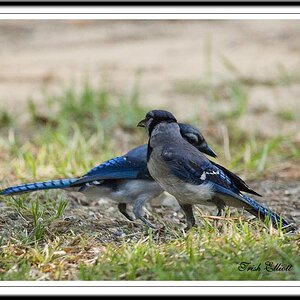
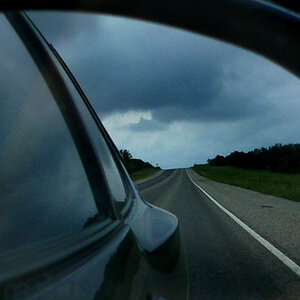
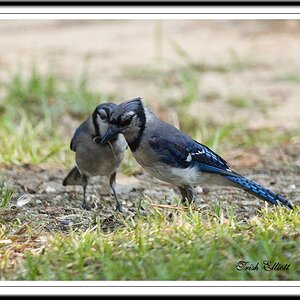
![[No title]](/data/xfmg/thumbnail/38/38737-350089c7ae87f5c983c5362b9b78b671.jpg?1619738703)
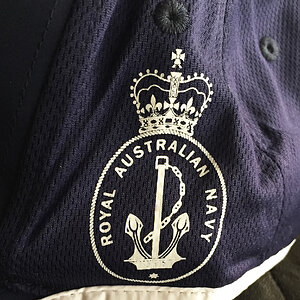
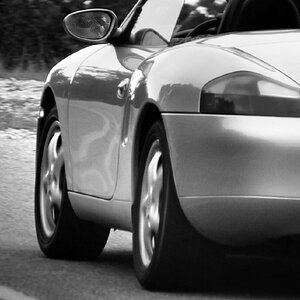
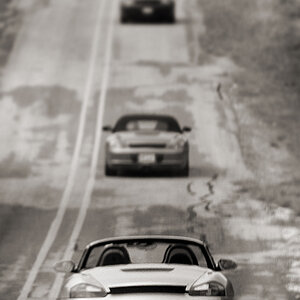
![[No title]](/data/xfmg/thumbnail/32/32709-80f0f0432fd5ec548a3efdb60ef77d46.jpg?1619735613)
